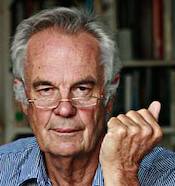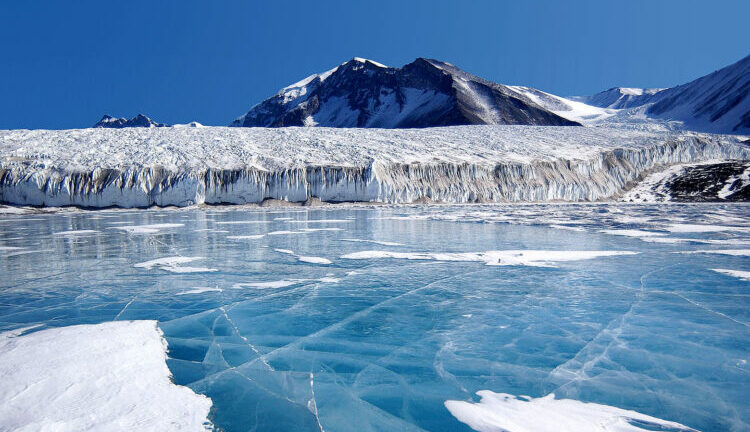By Jonathan Power*
LUND, Sweden | 19 November 2025 (WorldView) — In 1772, sailing to the far south, Captain James Cook deflated the prevailing myth of Antarctica, that it was a temperate land, fertile and populated. Although he never landed on the continent, he saw the vast icebergs, the frozen sea and the “worst weather anywhere in the world”. He wrote that “it is a continent doomed by nature” and doubted that man would ever find a use for it.
The words had not been long out of his mouth before governments started to make tentative grabs. The British were the first to make a move, claiming sovereignty because the government needed to regulate commercial whaling.

The grabbing continued over the next century, followed by a lull and the passive acceptance of the status quo by the rest of the world. More recently, however, the “ice continent”, the vast wilderness of ice, whipped continuously by hurricane force winds, surrounded by cold grey seas, became the centre of its own stormy debates. It is humanity’s last frontier on Earth, its ice-covered mountains and surrounding seas contain undiscovered resources- oil, gas, uranium, platinum, as well as krill, whales, penguins and petrels.
Britain, France and Norway have long claimed large areas of Antarctica–partly because they “discovered” and “effectively occupied” big chunks of the wasteland, even if “occupation” was nothing more than a weather station and half a dozen wooden huts. Australia, Argentina, Chile and New Zealand have claims based on proximity. The Chilean and Argentinian claims overlap with claims made by Britain. Surprisingly, neither Russia nor the US have a current claim.
So who owns Antarctica? The original buccaneering nations that grabbed it first? Or is it, like the UN’s Law of the Sea, another “common heritage of mankind”, as suggested by the eminent Venezuelan jurist Andres Bello, who developed the thesis in 1831 that “those things that cannot be possessed by one nation without detriment to the rest have to be considered by the international community as indivisible common patrimony”?
The discussions about Antarctica have been even more complicated than the complex Law of the Sea debate, due to the longstanding claims already in place. But in recent years, progress has been made.
Most recently, in December 2017, delegates from 24 countries and the European Union agreed that the Ross Sea, a deep bay in Antarctica, the world’s most southerly sea, would become the world’s largest marine protected area. In fact, it is the Earth’s most pristine marine ecosystem. It covers 1.57 million square kilometres (600,000 square miles) of the Southern Ocean. Both Russia and the US have acceded to the convention.
The Ross Sea, it was decided, would be protected from commercial fishing and mining for 35 years and possibly indefinitely. The Ross Sea, its shelf and slope comprise only 2% of the entire Southern Ocean, but they are home to 38% of the world’s Adelie penguins, 30% of the world’s Antarctic petrels and around 6% of the world’s population of Antarctic mink whales. It is also home to huge numbers of krill, a staple food for species such as whales and seals.
At first, Russia was the one country holding out against a consensus agreement. But then Russia did a U-turn- the year 2017 was designated by President Vladimir Putin as the Year of Ecology. First, Russia expanded a marine protected area around its own Franz Josef Land in the Arctic. It became a signatory to the Ross Sea agreement.
China and the US have also signed.
The Ross Agreement
Long preceding the Ross Sea agreement, in 1958, the claimants, the UK, New Zealand, Chile, Norway, Australia and Argentina, together with the Soviet Union, Japan, Belgium and South Africa, met to discuss a code for scientific research on the continent. In 1960, they signed a treaty providing for continued peaceful research. It also banned military activities, nuclear explosions and the dumping of nuclear waste.
It was an unusual piece of ad-hocery without any valid judicial basis. Nevertheless, its principles are essential, as they commit the big powers to behaviour and norms they usually shy away from.
As the Antarctic Treaty has matured, it, along with the Ross Sea Agreement, has become recognised as one of the most successful sets of international agreements, setting an example for peaceful cooperation worldwide.
As environmental regimes, they are unique. Environmentalists from green NGOS are overjoyed at the successes so far. Now they are shooting for their next target- a series of Marine Protected Areas like the Ross Sea one, in other parts of the cold continent and elsewhere.
There is, indeed, perfect peace in Antarctica when it comes to country rivalry. One wishes the Ross Sea treaty could serve as a template not just for other Marine Protected Areas in Antarctica but also for potential conflict zones elsewhere. Or is that too much to ask?
*Jonathan Power has been an international foreign affairs columnist for over 40 years and a columnist and commentator for the International Herald Tribune (now The New York Times) for 17 years.[WorldView]
Copyright: Jonathan Power
Image: Antarctica: The blue ice covering Lake Fryxell, in the Transantarctic Mountains, comes from glacial meltwater from the Canada Glacier and other smaller glaciers. The freshwater stays on top of the lake and freezes, sealing in briny water below.

